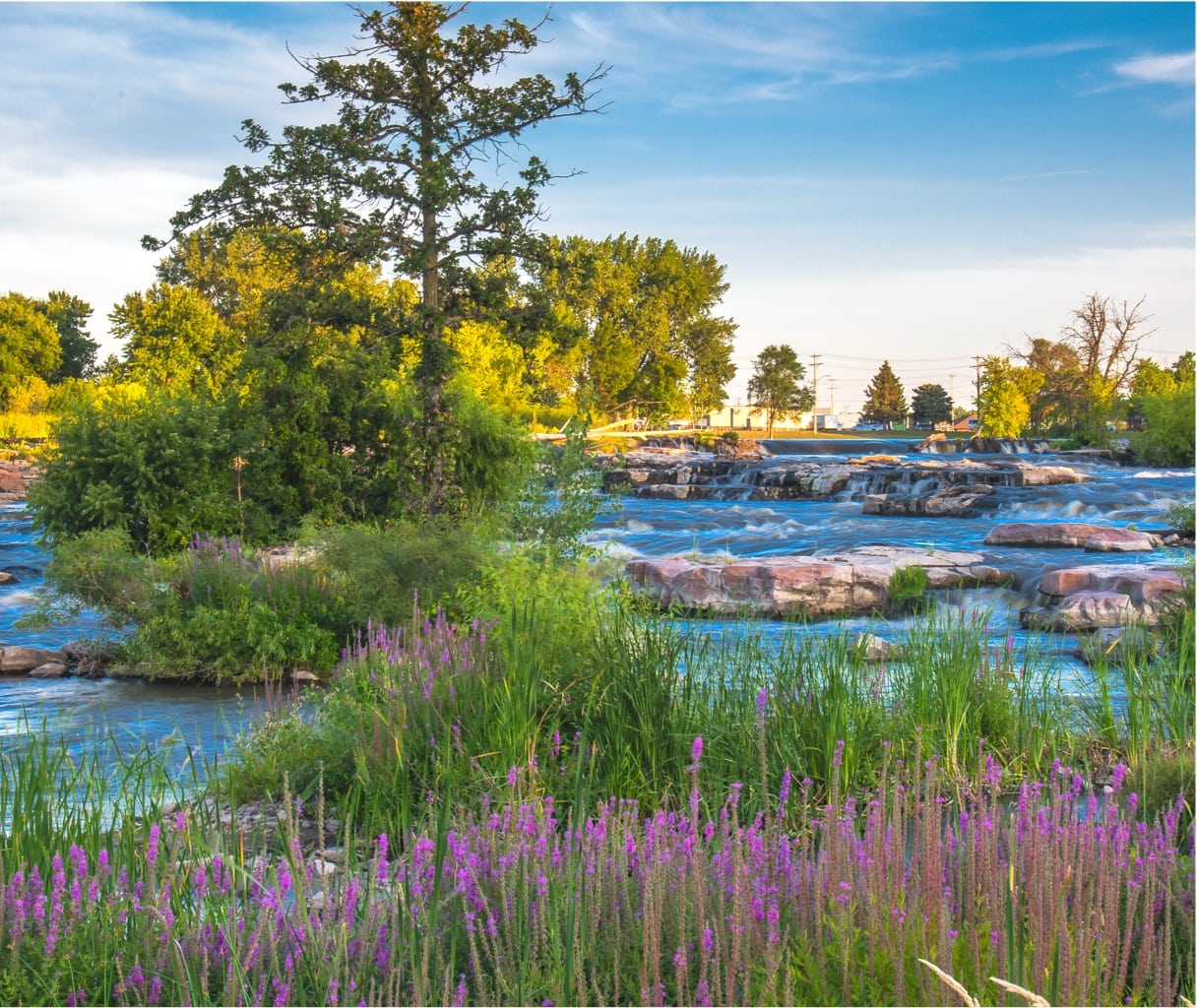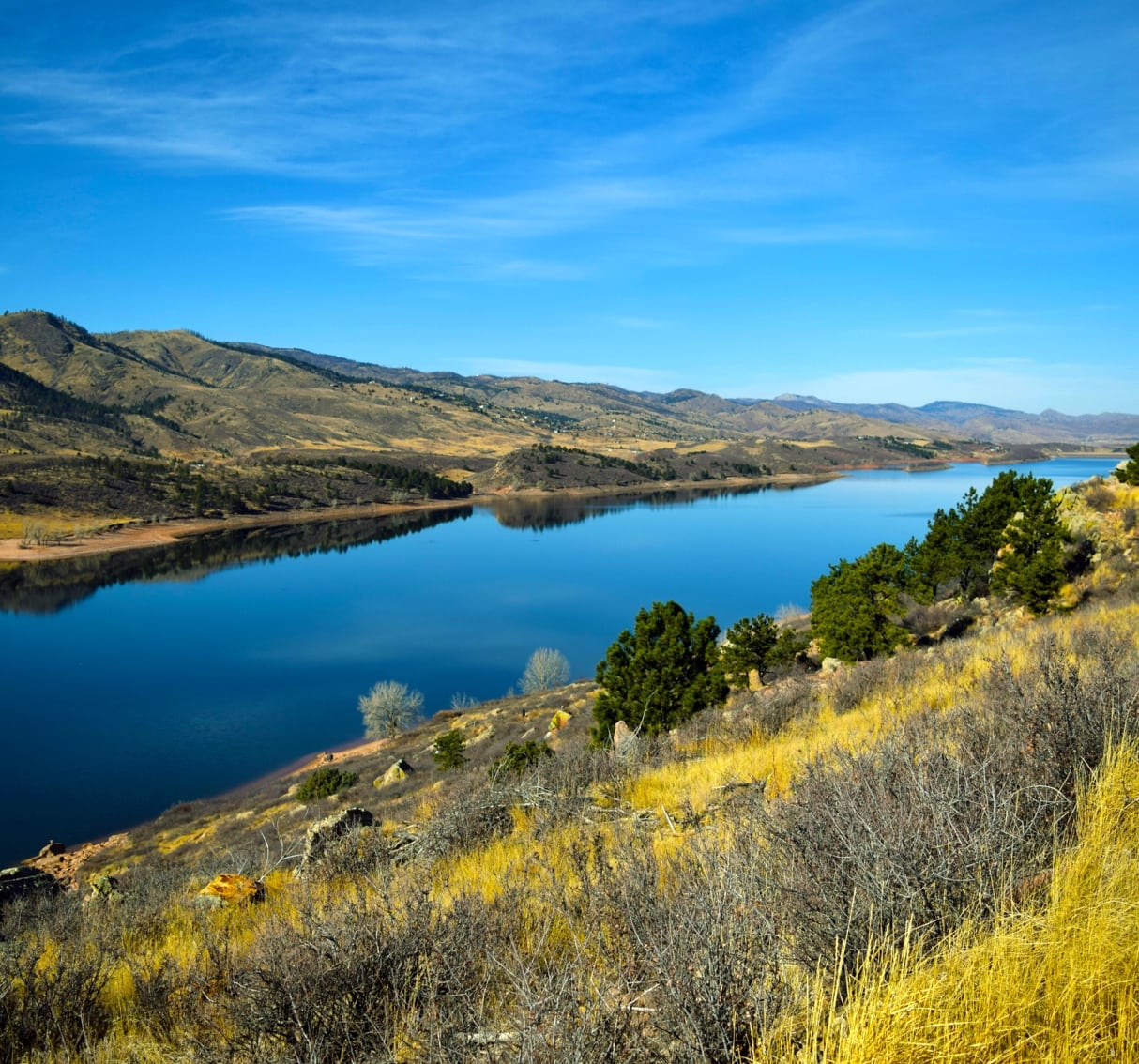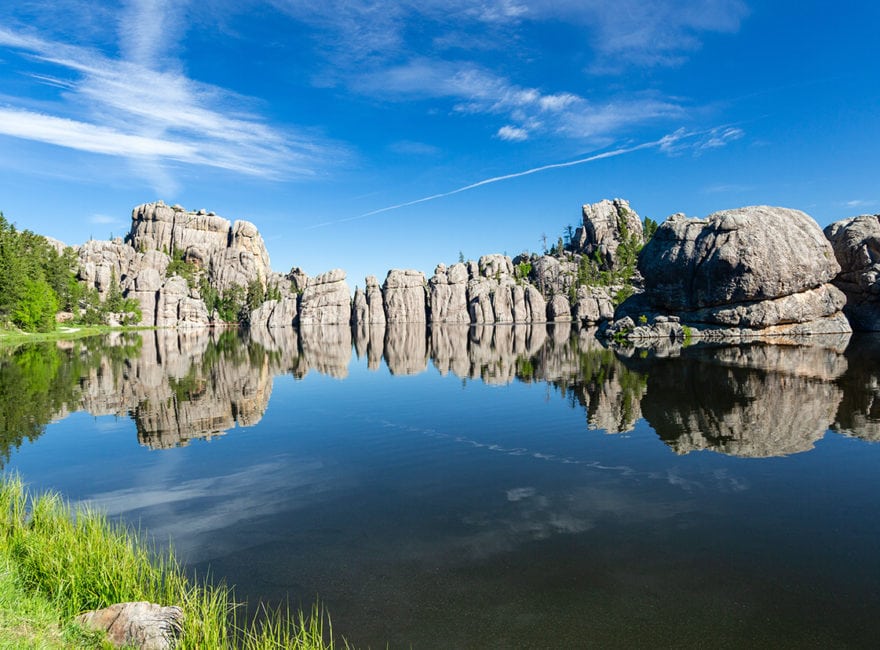About South Dakota
“I’m a novice AQUARIUS user,” says Sean Kruger, an Environmental Program Scientist with the South Dakota Department of Environment and Natural Resources. “It would be a stretch to say I have the time to look at it once a week. This was my first attempt at using the Empirical Modeler, and the fact that in two days I could come up with a working model that recreates 30 years of data – it speaks very well of the software’s ease of use.”
The model that he developed, with the help of an associate, was pivotal in a recent state board decision regarding a lake’s water use. Kruger and his department provide technical assistance to the state’s water users, primarily in areas of water quality, including nonpoint source pollution and the development of TMDL (Total Maximum Daily Load) reports. In the recent case, the South Dakota DENR faced a group of lake users who sought to raise the level of their lake.
The Challenge: Making Water Data Understandable and Actionable
Kruger explains, “The lake has a single inlet/outlet channel connecting it to a river. In the past, it likely served as a surge pool for the river.” For over ten years, a gate has governed the waterflow between river and lake. Before the gate was installed, river flooding occasionally caused serious damage to the lake and surrounding properties.
“The lake’s primary watershed is a chain of smaller lakes that deliver cleaner water. The original management plan was designed to reduce flood damage, and also to protect the lake’s water quality and reduce shoreline erosion.” Recent years of drought, however, had caused the water to drop, and some lake users proposed a revised management plan that would allow river floodwaters to raise the lake to a level that is better suited for recreation. The DENR disagreed. “The department felt that river water would carry excess loads of nutrients to the lake, which would have negative effects, and that the water level improvement would be temporary or incomplete.”
Using the Empirical Model, we were able to calculate how often the lake’s water level would have actually increased over the last 30 years, under the proposed management plan. It really helped the board decide that it was better not to allow them to bring water in. This was my first attempt at using the Empirical Modeler, and the fact that in two days I could come up with a working model that recreates 30 years of data – it speaks very well of the software’s ease of use.


The Solution: AQUARIUS
To develop a model for the lake’s water levels, Kruger used data from two water-level sensors. One, a USGS sensor located miles upstream, had been collecting data for over 30 years. The second was a DENR stage recorder in the lake’s inlet/outlet channel. It had been collecting data for two years. “With AQUARIUS, we were able to tie those two together, the short-term, two-year data set, and the long term, 30-year data set.
They extrapolated the data to create a model to demonstrate that the proposed management plan would have minimal positive effect on the lake’s water levels. “Using the Empirical Model, we were able to calculate how often the lake’s water level would have actually increased over the last 30 years, under the proposed management plan. It really helped the board decide that it was better not to allow them to bring water in.”
Thanks to AQUARIUS’ ability to provide clear visualizations of complex datasets, the board could understand the probable consequences of the lake users’ request. The request was denied, and the long-term health of the lake was protected.

Empirical Modeling is Just as Important as Rating Curves
In AQUARIUS software, the DENR originally sought a solution for the development of stage discharge relationships, or rating curves. Says Kruger. “The USGS likes AQUARIUS, so that’s how we got involved with it initially. We started out with a trial version, just for the Rating Curve toolkit. We liked what we saw, and expanded to the full Hydrologic Workstation.”
The Empirical Modeling tools proved essential in helping them develop TDMLs. “It’s become just as important to our program as the stage discharge relationships. When we’re developing TDMLs, we don’t necessarily have long-term data on a site, so we need to be able to extrapolate the data out. AQUARIUS software works well for that.”
Using AQUARIUS is faster, easier and more efficient than Microsoft Excel spreadsheet software. In Excel, you have to write your own formulas and hack your way through, but Excel doesn’t do most of what AQUARIUS does. Before AQUARIUS, we didn’t really have a way to do most of this. Empirical Modeling, for example, was tough. With AQUARIUS it’s a straightforward process that’s reproducible and defensible.


Using AQUARIUS is faster, easier and more efficient than Microsoft Excel spreadsheet software. “In Excel, you have to write your own formulas and hack your way through,” he says, noting they still use Excel for some tasks. “But Excel doesn’t do most of what AQUARIUS does. Before AQUARIUS, we didn’t really have a way to do most of this. Empirical Modeling, for example, was tough. With AQUARIUS it’s a straightforward process that’s reproducible and defensible.”
As the state increases its deployment of water level and water quality sensors, its reliance on AQUARIUS is likely to grow. “We’re using AQUARIUS for about a dozen sites, and hopefully by next summer, it’ll be up to 30 or 40. Ultimately we’d like to use it on all the WQM stations that are not monitored by the USGS.” For rating curve development, he says, “We’re planning to use Aquarius to model the stage discharge relationships on over 100 sites. We have a lot of ground to cover.”
Solution Highlights
-
Reproducible, defensible Empirical Modeling
-
Ease of use accelerates model development
-
Powerful extrapolation of water data for TDMLs
-
USGS-standard rating curves
